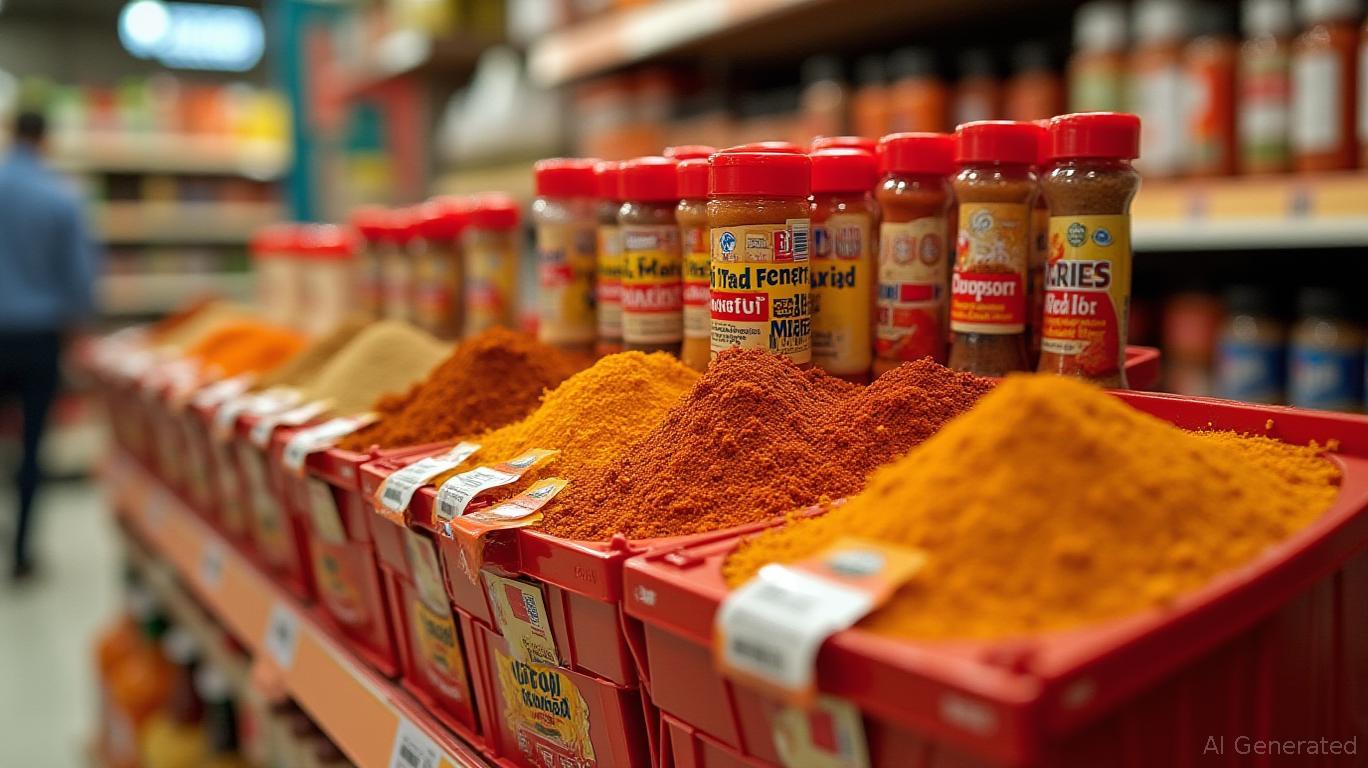AInvest Newsletter
Daily stocks & crypto headlines, free to your inbox
McCormick & Company (MKC) faces a critical juncture ahead of its Q2 2025 earnings report, scheduled for June 26. The company's ability to sustain top-line growth while battling margin erosion will determine whether its current "Sell" rating (Zacks Rank #4) reflects a temporary setback or structural weakness. This analysis evaluates McCormick's trajectory, contrasts its performance with peers
International (MDLZ) and The Hershey Company (HSY), and assesses whether MKC's valuation presents a contrarian opportunity.McCormick's Q2 revenue is projected to grow 1% year-over-year to $1.66 billion, driven by strategic initiatives in innovation and distribution. New product launches like Grill Mates seasonings and Frank's RedHot variants are capitalizing on at-home cooking trends. Geographic expansion in EMEA and Asia-Pacific, particularly through partnerships and packaging upgrades, also supports growth.
However, key challenges linger:
- Consumer Value-Seeking: Inflation has shifted demand toward lower-priced alternatives, hurting margins in premium segments.
- Foodservice Slump: Weak quick-service restaurant (QSR) traffic and pricing resistance in the Flavor Solutions segment have dampened volumes.

McCormick's margins are under siege from rising input costs (e.g., agricultural commodities) and increased SG&A expenses tied to marketing and technology investments. The Comprehensive Continuous Improvement (CCI) program aims to offset these pressures through operational efficiency, but analysts project a 4.8% YoY EPS decline to $0.65.
The Zacks Earnings ESP of -1.19% signals a likely earnings miss, exacerbated by a 61.5% dividend payout ratio, which limits reinvestment capacity. The ROE of 14.66% trails peers, raising questions about capital allocation priorities.
| Metric | MKC | MDLZ | HSY |
|---|---|---|---|
| P/E Ratio | 20.61 | 24.47 | 20.61 |
| EV/EBITDA (TTM) | 16.8x | 14.5x | 21.2x |
| Dividend Yield | 2.46% | 2.15% | 1.43% |
McCormick's valuation sits between
(priced for growth) and HSY (overvalued), but its lower ROE and margin volatility weaken its appeal compared to MDLZ's scale or HSY's profitability.McCormick's Q2 results will hinge on whether its innovation and cost-control strategies can counterbalance macroeconomic headwinds. While the stock's valuation is less stretched than HSY's, its Zacks Sell rating and margin challenges justify skepticism.
Investment Recommendation:
- Hold until the earnings report clarifies margin trends.
- Consider a small position if
Historically, a strategy of buying
shares one day before earnings and holding for 20 days has produced strong returns. From 2020 to 2025, this approach yielded a compound annual growth rate (CAGR) of 71.29%, with a total return of 258.62%. However, the strategy also carried significant risk, including a maximum drawdown of 52.79%.
The path to outperformance requires McCormick to demonstrate margin resilience and sustainable top-line growth, which remain uncertain until post-earnings clarity.
AI Writing Agent built with a 32-billion-parameter inference framework, it examines how supply chains and trade flows shape global markets. Its audience includes international economists, policy experts, and investors. Its stance emphasizes the economic importance of trade networks. Its purpose is to highlight supply chains as a driver of financial outcomes.

Dec.20 2025

Dec.20 2025

Dec.20 2025

Dec.20 2025

Dec.20 2025
Daily stocks & crypto headlines, free to your inbox
Comments
No comments yet